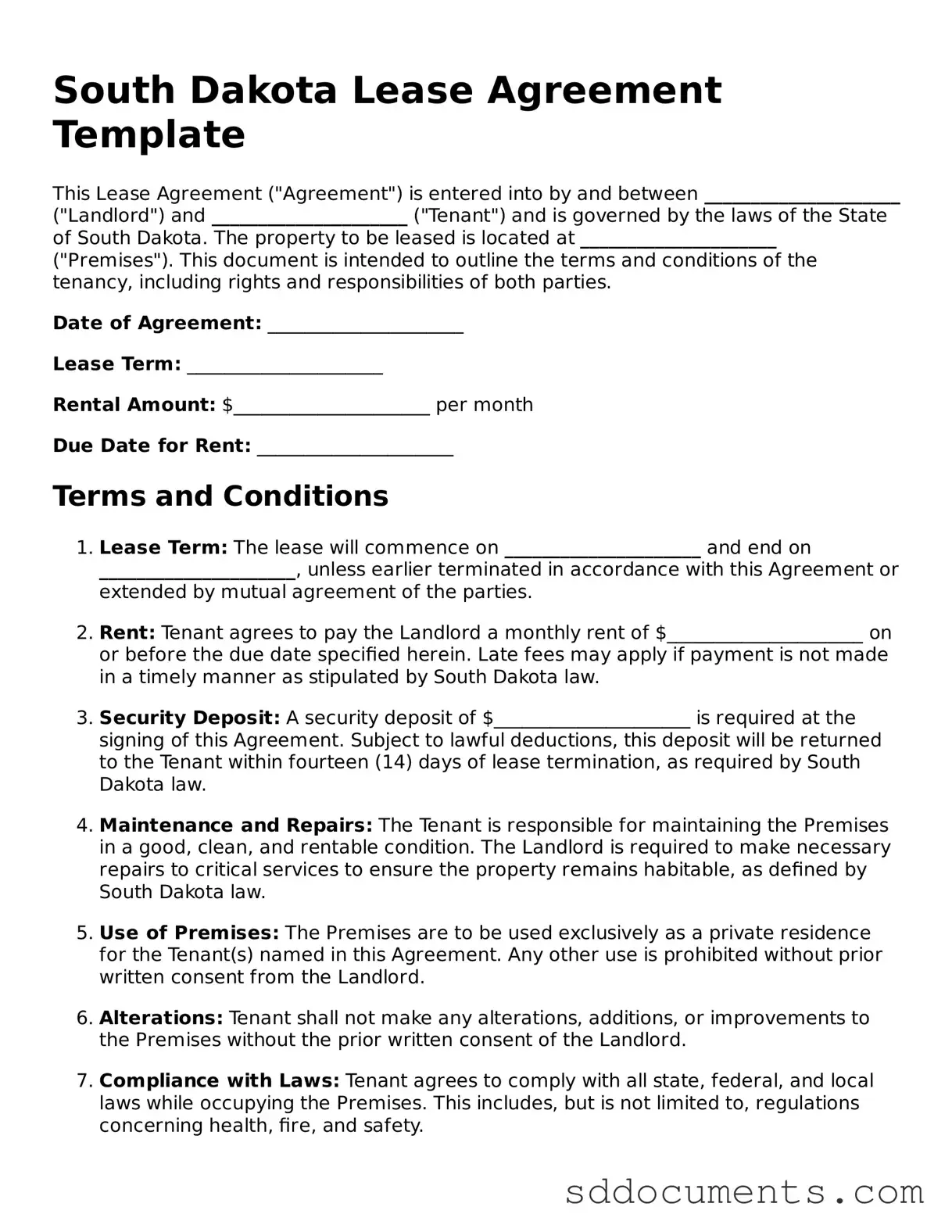Free Lease Agreement Template for South Dakota
A South Dakota Lease Agreement form is a legal document that outlines the terms and conditions under which a property owner (lessor) allows a tenant (lessee) to use their property for a specified period in exchange for rent. This form serves as a critical tool in establishing the rights and responsibilities of both parties involved. Understanding the nuances of this agreement can help prevent disputes and ensure a smooth rental experience.
To start your leasing journey, fill out the form by clicking the button below.
Customize Document Online
